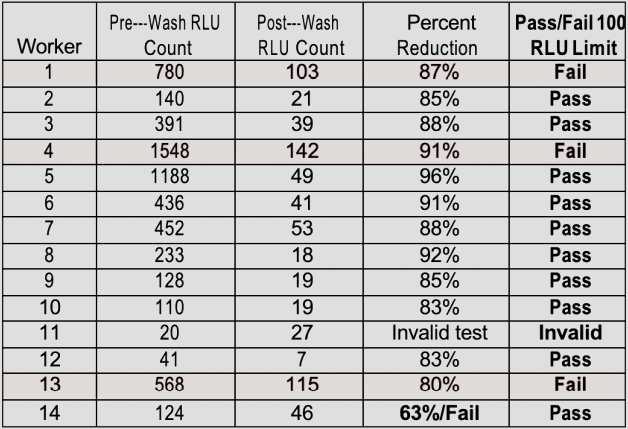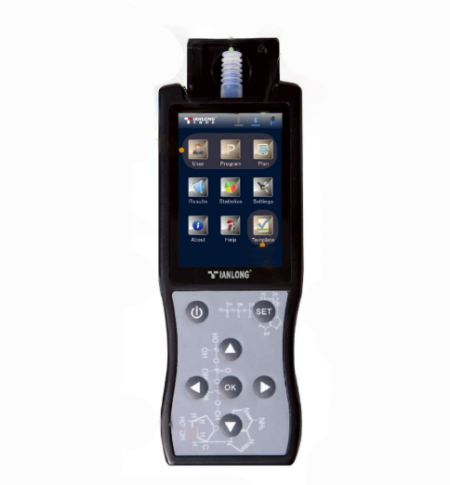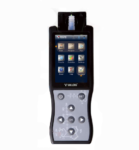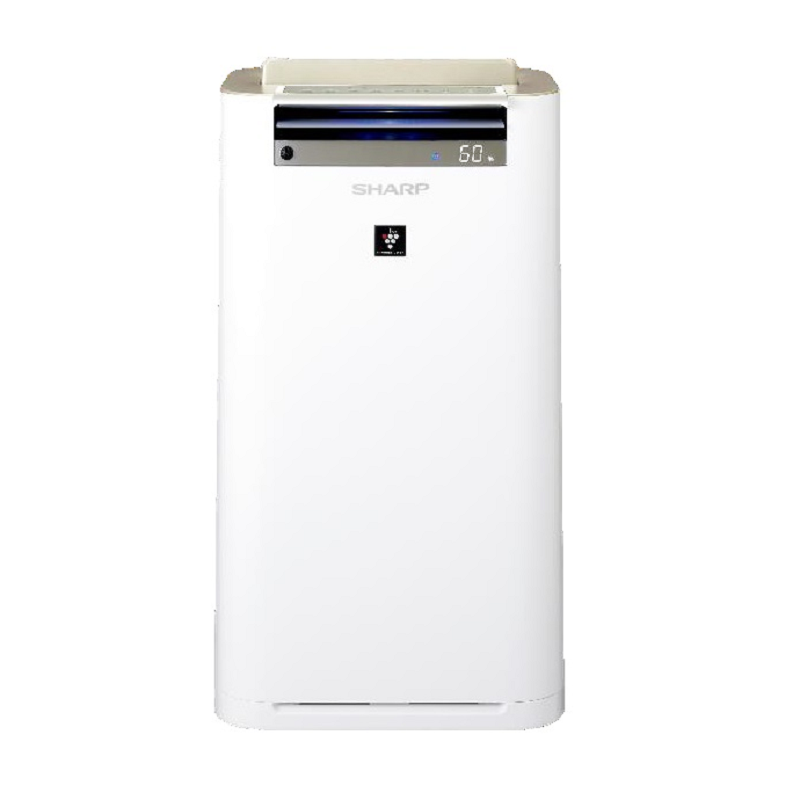ATP Hygiene Monitoring System (A010)
4,500.00 AED (Exclusive of UAE VAT@5%)
- Description
- Additional information
- Reviews (0)
Description
What is ATP?
ATP is an organic compound that provides energy to drive many processes in living cells and organisms, such as muscle contraction and chemical synthesis. ATP serves as a great marker for the prevalence of protein-like material on the surface of the skin (or other organic suface)—some of which could be dangerous and pathogenic
What is ATP testing?
The ATP test is a process of quickly measuring actively growing microorganisms through detection of Adenosine triphosphate, or ATP. In ATP testing, microorganisms on the surface of the hands combine with a certain enzyme to produce light which can then be measured using a device called a Luminometer. The amount of light that is “read” by the device is expressed in Relative Light Units (RLU’s). The more microorganisms that exist on the surface of the skin, the more light that is generated and thus, the higher the RLU reading will be. High ATP levels indicate that more organic material—some of which may possibly be harmful—are present. Organic material on the surface of the hands may fall into one of two categories: transient flora and resident flora.
Terminology
Resident flora:
organisms that naturally occur on skin and do not cause disease. Resident flora are essential to skin health and actually help protect the skin from transient organisms.
Transient flora:
Transient or temporary skin flora refers to the microorganisms that transiently colonize the skin. This includes bacteria, fungi and viruses, which reach the hands, for example, by direct skin-to-skin contact or indirectly via objects.
How to measure reduction:
pre & post swabbing
An effective hygiene event results in reduced microorganisms on the hand.To measure this, make sure to capture a swab of the natural hand first, and then conduct a second swab after a hand wash is completed to measure the
difference.
Using ATP testing for process validation:
Determining your methods
There are two basic ways to use ATP testing for hand hygiene validation:
1. Pass / Fail Limit Method: involves setting a certain RLU limit and measuring whether employees RLU counts fall within this range.
2. Percentage Reduction Method: involves conducting a pre-hand wash swab and a post-hand wash swab to measure the percentage reduction in RLU counts.
Protocol considerations for operators
The following considerations should be taken into account when implementing an ATP testing protocol within a manufacturing or processing facility.
ATP readings will never reach 0. There will always be living organisms and proteins on the skin which will result in RLU readings. This does not mean that dangerous pathogens are present.
Each individual in your facility will have different naturally-occurring levels of ATP, and some unique individuals will have very high levels which will not be reduced below a certain level without damaging the skin. Therefore, you should always expect to find “outliers” in your test protocol, or individuals with unusually high levels of baseline ATP counts.
Lastly, it is very important that the same test methodology and technique be used for every test subject, including location of swab site, firmness of swab pressure, coverage of swab tip, and avoidance of cross contamination of
swab. Every individual tasked with conducting an ATP test should receive the same training, and the protocol itself must be validated.
Using the Percentage Reduction Method:
We recommend the Percentage Reduction Method for testing with ATP Luminometers for two reasons. For one, this method reduces the number of outliers due to naturally high levels of ATP. Second, focusing on a percentage of reduction eliminates the need to establish what the pass/fail limit should be, which can differ for every population and facility.
Using the Pass/Fail Limit Method:
The Pass / Fail Limit Method is much more sensitive to variability in testing and results in more outliers, or individuals who fail to meet the minimum RLU reading standard. However, this method is frequently used as a
training tool to demonstrate to individuals that they are not washing consistently every time they wash and that their washing method may not be effective—when, if compared to their baseline RLU counts, may not necessarily be true.
Why ATP testing is recommended
- Real time results. Forget the time and hassle required of incubation or
microbiological reading in a certified lab. - It involves fewer variables compared to other test methods, increasing
reliability and accuracy. - Far less expensive and requires fewer materials.
- The incidence of outliers (data that cannot be explained) is much lower.
The challenge of pass/fail limits:
In fact, most ATP test device companies have not developed a protocol or a pass/fail RLU limit for the testing of hand or skin hygiene because it is nearly impossible to determine a standard limit that takes all environments, individual characteristics, and processes into account. Those that do have a protocol typically recommend that a realistic pass/fail limit be established which factors in the specific population to be tested as well as the type of hygiene that will be occurring (e.g., surgical scrub, alcohol rub, healthcare hygiene, manual wash, soap type, automated hand
wash, other).
A standard rule of thumb is to aim for under 100 RLUs after a regular 30–40 manual wash. However, if an individual is tested and has a very high pre-wash RLU reading, they may still achieve a sufficiently high percentage
reduction if compared with the post-wash RLU reading. For example, Worker #4 in Figure 2 would fail in a process where the pass/fail limit is 100 RLUs, however when you compare this person’s post-wash RLU count to their
pre-wash RLU count, the reduction percentage is significant (91%). Individuals that have naturally-occurring high RLU counts may not be able to achieve an RLU reading under 100 without suffering damage to the skin.
Some individuals with high readings should be tested multiple times to establish their individual pass/fail level
Setting your targets
One way for a facility to establish its own baseline percentage reduction goal and/ or its own Pass/Fail RLU limit is to perform a 10 subject ATP test protocol and use the average percentage reduction found among the 10 test subjects when comparing prewash RLUs to post-wash results. See below the 14 subject
test conducted by Meritech as an example

Additional information
| Weight | 2 kg |
|---|







Reviews
There are no reviews yet.